
Frank Lloyd Wright was a multitasking maniac with diverse talents, from writing and teaching to architecture and interior design. Born in 1867 in Wisconsin, Wright’s mother declared in his early years that he, her first child, would one day create the most beautiful buildings in the world. When Wright was in his 20’s, he would work to bring his mother’s dream to fruition. Over the course of Wright’s creative career, which spanned over 70 years from the end of the 19th century to the mid 20th century, he designed over 1000 pieces, out of which over 500 were completed, and wrote over 20 books.
Wright conceptualized a new type of design termed Organic Architecture that focused on the creation of structures that emphasized harmony between humanity and our environment. He was also the leader of what would later come to be known the Prairie School style of architecture, which involved flat or hipped roofs with overhanging eaves, horizontally grouped windows, and the assimilation of architecture into the landscape. As a pioneer in the field of architecture and design, the countless creations of Frank Lloyd Wright are preserved and held for their historic and aesthetic value. These 15 pieces will give you a look into the early development of modern architecture.

(By Daderot, Wikimedia Commons)
Designed and built in 1935, in southwestern Pennsylvania, this home is considered the ultimate display of organic architecture, and has been designated “the best all-time work of American architecture”, by the American Institute of Architects (AIA). The house has been built partially over a waterfall in an area known as Bear Run, in Fayette County of the Laurel Highlands. In 1966, it became a National Historic Landmark and has since been added to the Smithsonian's "Life List of 28 places to visit before you die."
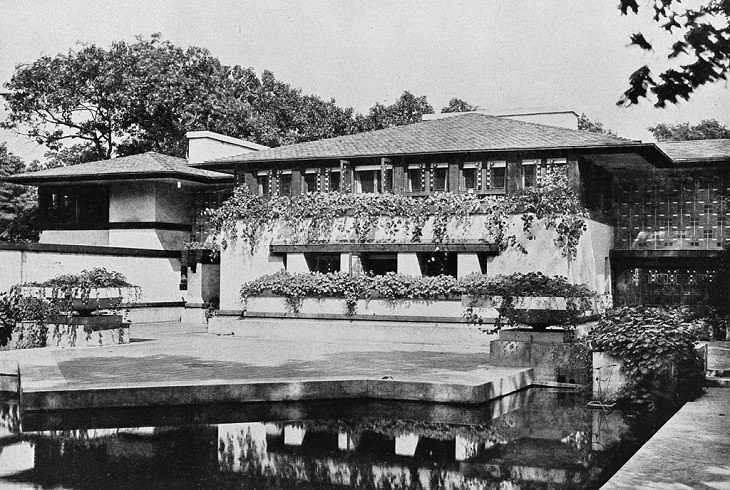
Also known as the Avery Coonley House or the Coonley Estate, this sizeable chunk of land consisted of numerous residential buildings spread over 10 acres. It is among the largest and most elaborate homes built in his original Prairie School design. It was built between 1908 and 1912, on the banks of Des Plaines River in the Riverside Historic District of Illinois, a National Historic Landmark. The estate itself has also been listed as a National Historic Landmark.

(By Teemu008, Wikimedia Commons)
Another architectural marvel built in the classic Prairie School style between 1902 and 1904. This house is located on East Lawrence Avenue in Springfield, Illinois. It also goes by the names Susan Lawrence Dana House and Dana House, named after the patron that commissioned its construction. The house has since become a state historic site under the protection of Illinois Historic Preservation Agency (IHPA) and was selected by the AIA as one on the list of Illinois 200 Great Places.

(By Jaydec, Wikimedia Commons)
Located in Grand Rapids, Michigan, smack in the middle of the Heritage Hill Historic District, is Meyer May House, also termed as "Michigan's Prairie masterpiece". This prairie school house, built in 1908-1909, is especially noted for its contrast beside Victorian-style homes that are commonly found in the historic district. In 1985, the property was purchased and restored by an international office furniture company, Steelcase. The home was opened to the public shortly after and is still open for tours on Tuesdays, Thursdays, and Sundays.
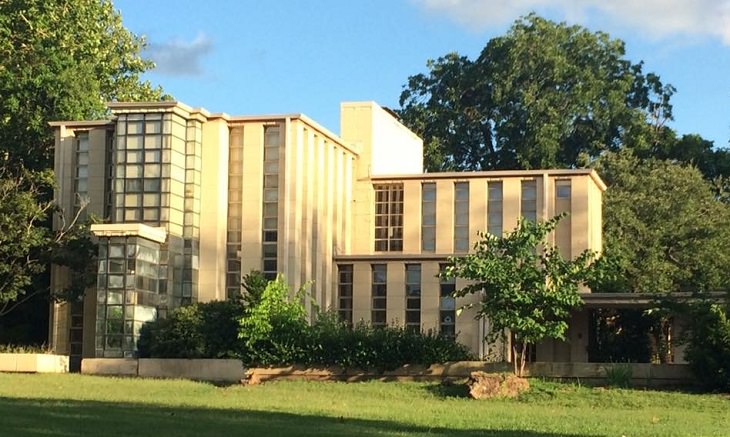
(By Binksternet, Wikimedia Commons)
Westhope is a textile block home, designed and constructed by Wright in 1929, in Tulsa, Oklahoma. The home was built for his cousin, Richard Lloyd Jones, who was the then publisher of the Tulsa Tribune. In honor of its patron, the house is also called the Richard Lloyd Jones House. This house is mostly associated with a common anecdote about the architect. According to the quoted story, Jones called Wright one night during a storm to complain about water from the roof leaking on to his desk, to which Wright simply replied, “Richard, why don’t you move your desk?”
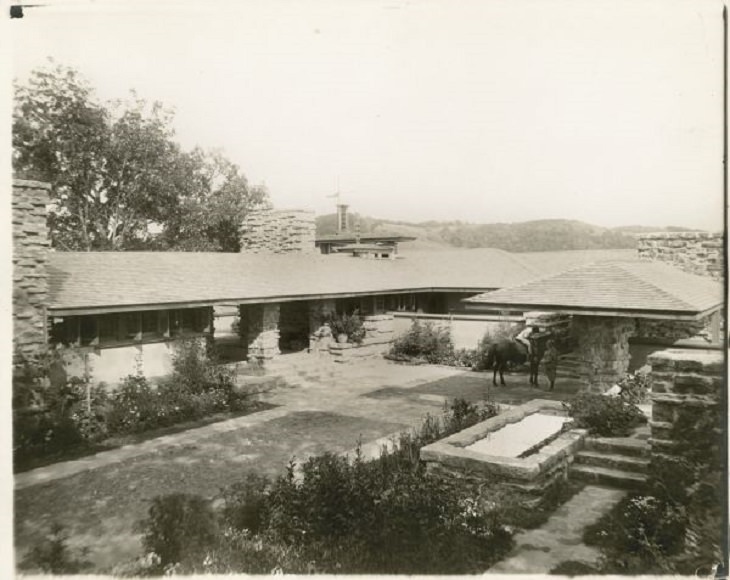
(By Henry Fuermann and Sons, Wikimedia Commons)
The original and first piece to go by this name, this house was the estate of the architect Frank Lloyd Wright himself. It was built in the village of Spring Green, Wisconsin, on the land that had first belonged to the maternal ancestors of Wright. It was also designed in his Prairie school style, emulating the flatness of the plains, and making use of the natural limestone of the area.
It was first built in 1911, but Wright continued to make additions and rebuild parts of it until his passing in 1959. It was and continues to be the home for the School of Architecture at Taliesin From 1937 onwards, after the construction of Taliesin West, this building also took on the names Taliesin East, Taliesin North, and Taliesin Spring Green.
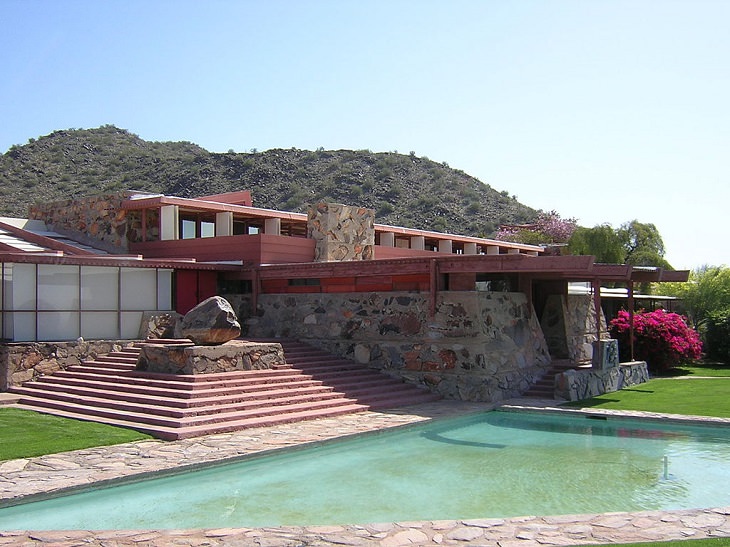
(By Lar, Wikimedia Commons)
Taliesin West was built in 1937, in Scottsdale, Arizona, and was the winter home and desert school for Frank Lloyd Wright. The home was designed in a style known as “desert masonry”, which made use of the local desert rocks, stacked with wood and filled with concrete.
This estate is both the winter home for the School of Architecture, with summer classes held in Taliesin Spring Green, and the headquarters for the Frank Lloyd Wright Foundation. It has been designated a National Historic Landmark since 1986 and has also since been inscribed on to the list of UNESCO World Heritage Sites.
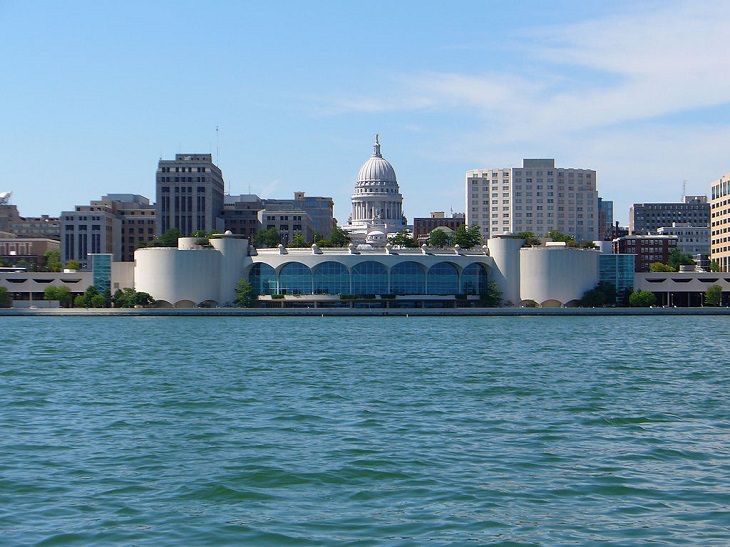
(By Emery, Wikimedia Commons)
Sitting on the shores of Lake Monona in Madison, Wisconsin, right in front of the Capitol building, is the officially named Monona Terrace Community and Convention Center, more commonly known as Manona Terrace. Wright approached the County Board of Madison with his plans and designs for the Convention Center in 1938.
His proposal was summarily rejected, but Wright continued to push forward with and further develop his designs until his passing, at which point the center had still not been approved for construction. In 1990, Wright’s designs were resurrected, and in 1994 construction was underway. It was finally only in 1997, nearly 60 years after Wright’s original proposal, that the doors of the Manona Terrace Convention Center would open.
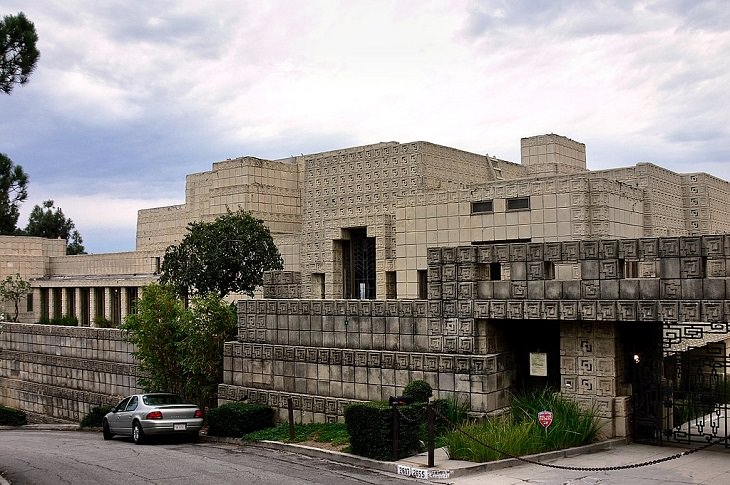
(By Mike Dillon, Wikimedia Commons)
This home was designed and built between 1923 and 1924 by Wright for his patrons Charles and Mabel Ennis, in Los Feliz, Los Angeles, California. It is the fourth and final building designed by Wright in his signature textile block style, much like Westhope, and is the largest among them. The design was also greatly inspired by the layout of Mayan Temples. In fact, Ennis house is said to be an ideal example of Mayan Revival architecture and was constructed using 27,000 decomposed granite blocks. It has currently been designated a city, state, and national landmark.

(By Los Angeles, Wikimedia Commons)
Along with Ennis House and Westhope is the Samuel Freeman House, one of the four textile block buildings of Wright located in Hollywood Hills. The construction of the building started in 1923 and was managed by the son of the architect, Lloyd Wright.
In 1971, this building was added to the National Register of Historic Places and a decade later, it would be officially listed as Los Angeles Historic-Cultural Monument #247 and California Historical Landmark #1011. Since 1986, the Freeman house has been the property of the USC School of Architecture.
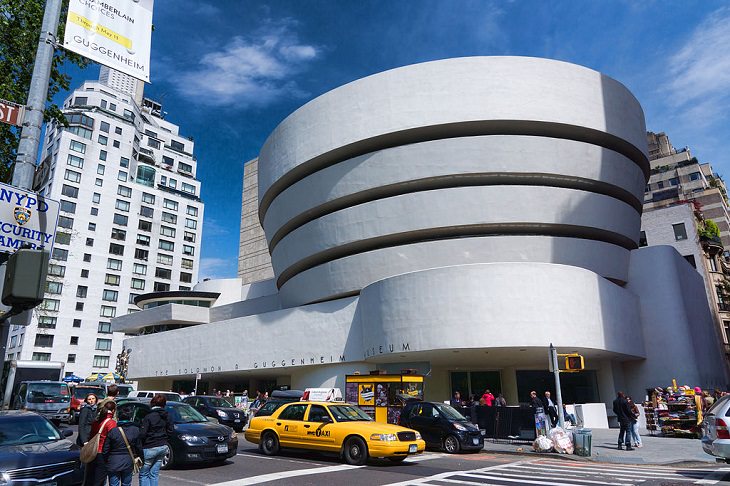
(By Jean-Christophe BENOIST, Wikimedia Commons)
In the Upper East Side of Manhattan, New York City stands the glorious art museum, the Solomon R. Guggenheim Museum, more commonly referred to as the Guggenheim. This imposing building is the permanent home to a stunning collection of Impressionist, Early Modern, and Contemporary works of art.
Construction of this building was completed in 1959, the final year of Wright's life. While Wright debated over numerous different plans for the Museum, and he finally settled on a modern style with a spiral design. He insisted the museum be close to Central Park, to cut out the congestion and chaos of city life.
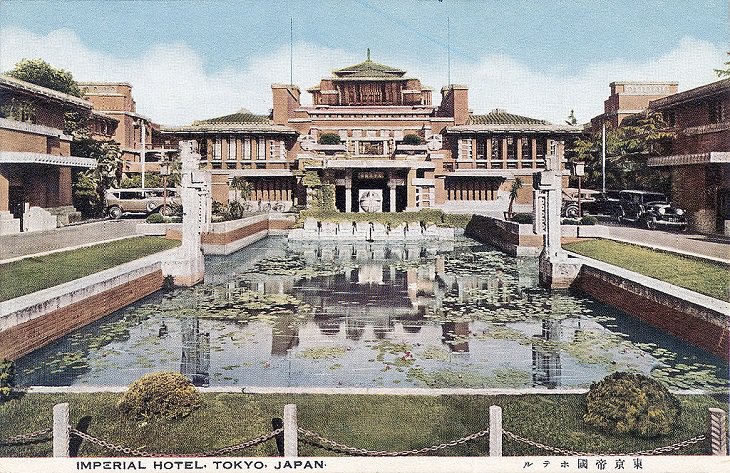
Located in the Chiyoda Ward of Tokyo, Japan is the gorgeous Imperial Hotel, first created at the behest of Japanese Royalty in 1880. Business was slow and the original structure was torn down in 1911. Frank Lloyd Wright, a collector of Japanese Prints was introduced to the owner of the Imperial Hotel in that same year. After a visit to the site, Wright had already begun to draw out the design in his mind.
Wright shuffled a few times between his homeland and Japan for the next few years and finally, in 1917 Wright was able to finalize his plans for the construction. He then returned in 1919 to oversee construction. It was during this long stay, in 1922, that Tokyo was hit the Great Kanto Earthquake. Some parts of Wright's designs remained standing, while other annexes were destroyed. Wright left Japan for good within the next few weeks, and 11 months later, the hotel opened its doors once again.